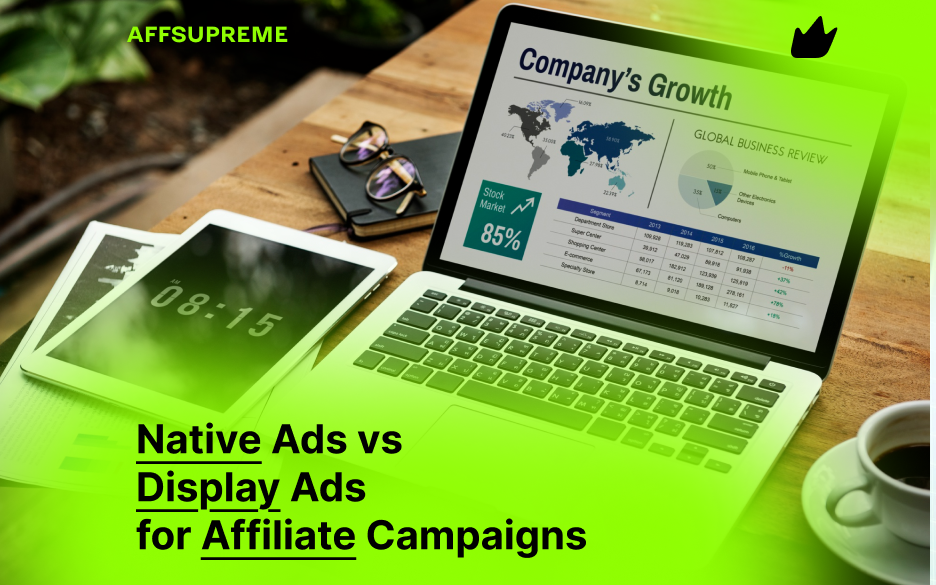When it comes to promoting affiliate offers, choosing the right ad format can make or break your campaign. Native ads and display ads are two of the most popular paid traffic sources for affiliate marketers — but they serve different purposes and yield different results.
In this article, we’ll compare native ads vs display ads in the context of affiliate campaigns, examining performance, user behavior, and ROI. By the end, you’ll know which is better suited for your niche and budget.
What Are Native Ads?
Native ads are paid advertisements that blend into the content of the website or platform they appear on. They match the look, feel, and function of the media format they live within — such as sponsored content on news sites or in-feed ads on platforms like Outbrain, Taboola, or MGID.
Key Features:
-
Non-intrusive and appear as recommended content
-
High engagement and click-through rates (CTR)
-
Work well for storytelling, advertorials, and soft-selling strategies
What Are Display Ads?
Display ads are visual-based advertisements — often banners — that appear on websites within the Google Display Network or programmatic ad platforms. They can include images, videos, or rich media.
Key Features:
-
Eye-catching and brand-focused
-
Often appear in banners, sidebars, or interstitials
-
Easier to ignore (banner blindness is common)
Native Ads vs Display Ads: Head-to-Head Comparison
1. Click-Through Rate (CTR)
-
Native Ads: Typically see higher CTR due to their seamless integration into content.
-
Display Ads: Often suffer from lower CTR, especially when they appear overly promotional or generic.
2. Conversion Quality
-
Native Ads: Better suited for pre-sell content, warming up users before sending them to affiliate offers.
-
Display Ads: May drive traffic faster but can result in lower conversion rates unless highly targeted.
3. User Trust
-
Native Ads: Feel less like ads and more like organic content. Users are more likely to trust and engage.
-
Display Ads: Tend to feel more like hard-sell promotions, leading to lower engagement.
4. Creative Requirements
-
Native Ads: Require strong headlines and compelling visuals to match editorial content.
-
Display Ads: Depend heavily on graphic design and A/B testing of creatives.
5. Platform Reach
-
Native: Popular on news websites, blogs, and content-heavy platforms.
-
Display: Broad reach through Google Display Network, Facebook Audience Network, and programmatic inventory.
Which Is Better for Affiliate Marketing?
Use Native Ads If:
-
You’re promoting low to mid-ticket offers with storytelling potential.
-
You want to drive traffic to pre-landers or advertorials.
-
You’re in niches like health, finance, e-commerce, or software.
Use Display Ads If:
-
You have strong visuals and want to scale fast.
-
You’re doing retargeting or brand awareness campaigns.
-
Your landing pages are highly optimized for cold traffic.
Cost Considerations
-
Native ads often have lower CPCs but require quality content to convert well.
-
Display ads may cost more per click and require more testing due to banner fatigue.
Final Verdict
Native ads are typically the better choice for affiliate campaigns focused on content-driven funnels, especially when you want to pre-sell an offer through engaging stories or reviews.
Display ads, while powerful for volume and reach, require more aggressive optimization and may not convert cold traffic as effectively without strong creatives and retargeting layers.


